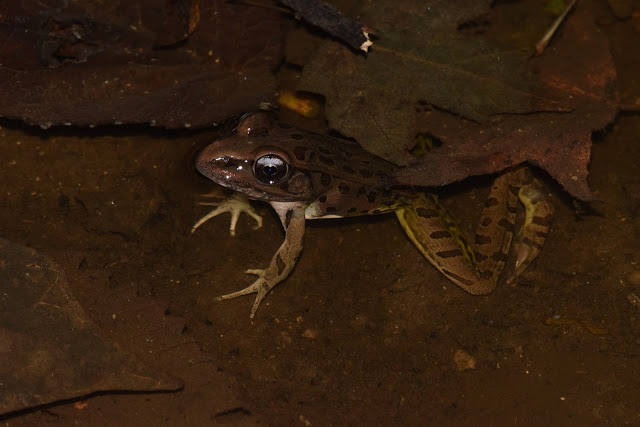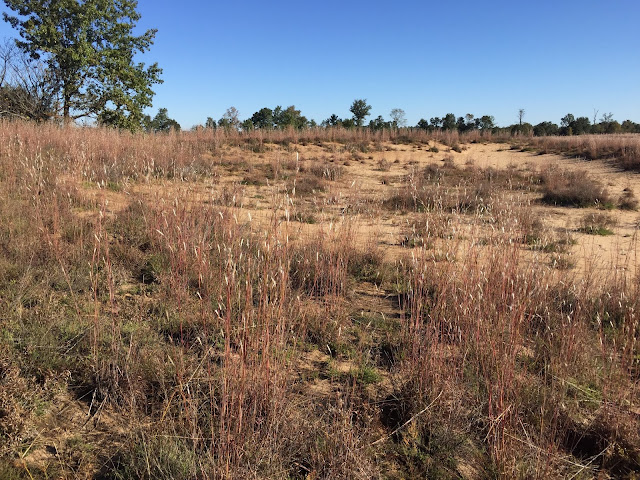I have always liked ramen and had been to a fair number of ramen restaurants across Canada but the first time I really learned what good ramen is was in Japan. I lived down the street from a ramen restaurant chain that made an amazing miso chashu ramen. It wasn't a spicy ramen like I normally like, but it was greasy saltiness that was heavenly and so full of flavour that I didn't miss the spice.
Honestly after traveling around Japan I can't exactly pinpoint where my favourite ramen came from. I know I had amazing spicy miso ramen while I was there but really I just remember the one that was down the street. When I think of delicious ramen that is the place I think of.
Now that I am back in Guelph I am lucky enough to say that I do actually have two delicious ramen restaurants that I can go to within the City, Kenzo Ramen and Crafty Ramen. Kenzo ramen does remind me a lot of the restaurants in Japan, but it's still not quite there. Even if it was exactly spot on I still have always wanted to make my own so I have experimented with a bunch of things and found something I very much like. I can't say if it is very authentic or not but it tastes damn delicious!
 |
| Photo by William Delamare |
Step 1: Stock/ Broth
I use chicken or turkey broth to make my ramen since this is typically the leftover bones I have to make broth with. When I am making soup stock for ramen I keep it very simple.
- Bones from 1 chicken (or half a turkey)
- 4-6 cups water
- 1 tbsp salt
- Bay leaves (optional)
- Onion or other vegetables (optional)
- Kombu kelp and dried bonito flakes can add additional umami flavour to taste. One square of kelp and a pinch of bonito flakes is usually enough.
Put the bones into a large pot. Fill the pot with water. Add a little salt and the bay leaves. Bring the pot to a boil then reduce to low heat and let it simmer. I usually let it simmer for at least 6 hours and top it up with water as needed. If I am making this well in advance of when I want to make ramen, I let it boil down into a stock so I can store it in a jar in the fridge easily. Strain liquid into a bowl to get the bones out.
If you want to skip this step you can cheat and just buy broth.
Step 2: Chashu Pork (Braised Pork Belly)
- 1 pork belly
- 2 tbsp sugar
- 1/2 cup soy sauce
- 1/2 cup mirin (ooking sake)
- 1 tsp neutral oil (Sesame oil, canola oil or sunflower oil works. Not olive oil!)
- Black pepper to taste
- Pinch of salt
- Ginger, garlic and/or green onion to taste
There
are two common ways to make Chashu Pork. Either way you should marinade
pork belly overnight. I tried with other cuts of pork and it just
wasn't the same. The
fattiness of pork belly really contributes to the texture and flavour.
If you don't see pork belly offered then you can ask the butcher in your
grocery store. Bacon is sliced from pork belly so the butcher typically
does have larger blocks as well, but most people want to buy them as
cut pieces. Make sure to buy a piece without skin or rind unless you
want to remove that yourself as well. I forgot to remove it once and it added a very odd metallic taste - almost like liver.
If you are cooking the Chashu Pork to eat with dinner that night I recommend marinading overnight before the day you want to cook it. If you are cooking it in advance then you can marinade it more after it is cooked to get additional flavour into it. This is a personal preference and you don't need to do it. It will still be delicious.
To marinade I mix 1 cup soy sauce with 1/2 cup mirin. I personally add in garlic, black pepper, sugar and ginger. I've read elsewhere that people add green onion and salt, but I find the pork is typically salty enough and I can't really taste the green onion over the other flavours. If you've not marinading before hand you will mix the exact same things in a pot to cook it day of. When I haven't been able to get mirin I have honestly just used soy sauce and it was still delicious.
So now the different methods in order from the most work to the least.
Rolled:
The fancy way of making it is to roll it into a log and tie it. Click Here
for a really good description on how to roll it and cook it as well.
Rolling it keeps the center moist but still allows it to absorb flavour.
This is actually my favourite way when restaurants make it, but I find
it is a lot of work so I wouldn't typically do this myself, unless for a
special occasion.
If you marinated overnight pull the log out
with tongs and braise the log by essentially frying it on high heat in a
neutral oil until the outside is nicely browned. I don't have a cast
iron pan but those really are the best for doing this.
Then put
the log into a pot that it can fit lengthwise into and pour the marinade
over it. Ideally the sauce should reach about half way up the log or
more. Turn the log on occasion so that each section gets the flavour
cooked into it. Alternatively, you can use a slow cooker, dutch oven or
even a pyrex in the oven on low heat for this. Results can be slightly
different for each method so it really just depends on your personal
preference and what you have to work with.No matter what you do you are
going to simmer (low heat) until it has cooked through (~2 hours)
After
it has cooked you can store it in a ziploc or tupperware overnight with
some extra sauce for use in ramen the next day. I must admit that
slicing it the next day when it has cooled down is easier, but most of
the time I wait until it has cooled a bit and just cut it up and serve
that day since I marinade overnight before cooking.
This way does involve simmering it for 2 hours.... Hence why I often prefer to do either of the following two methods.
Block:
The
other common way of making it is to simply cook the block. This is much
easier and faster but you need to be careful not to overcook it so that
the center of the block stays moist. Essentially you do exactly as I
have described for the rolled method but without rolling up the block of
pork belly. This does cook faster too! I'd say it takes about half the
time.
Sliced:
I have at one time or another gotten super hungry and wanted my meat to cook as fast as possible so I also made a third completely non-official or proper way. First mix the soy sauce, mirin, oil, garlic and ginger together. Then cut the pork belly into thick slices, lay them flat in a pyrex dish, cover with soy sauce mixture. Sprinkle salt, pepper and sugar over top of the slices. Let all that marinade overnight in a pyrex dish and then pulled it out and stuck it in the oven. This cooks much faster than the above methods and actually gets a tonne of flavour into it because it has a higher surface area directly soaking and cooking in the sauce. It being soaked in the sauce fully also means you don't have to deal with flipping it at all. When I do it this way I cook it in a pyrex dish in the oven with the lid on. It takes about 30 minutes at 375F. To me it tastes just as good as the above methods but is very easy.
Step 3: Soup!
- 1-2 tbsp garlic finely diced or grated (approximately 6 cloves)
- 1-2 tbsp ginger finely diced or grated (a 1 inch piece)
- 2 tbsp sesame oil
- Spicy bean paste or chilli oil to taste (I like about 1-2 tbsp)
- 2-4 tsp miso paste (I personally prefer yellow to red but have no rational reason why)
Now lets turn that chicken stock (or broth if you kept it watery) into a nice ramen soup! If it was boiled down to stock you will probably want to add some water to it so that it isn't as strong. So dilute it to a flavour level that you like. I like mine on the strong side so I add very little water to it at this point. I do add the garlic, ginger and chilli oil though to get even more flavour! Note the only reason I have separated the stock/broth from this is that I use a very fine mesh strainer to get the bones out when making the stock/broth and I actually want the garlic and ginger to be in the soup. So in order to make sure they don't get strained out I put them it at this point. If you put that in sooner you'll probably just get more flavour out of it. You could do this by putting in the whole clove of garlic and piece of ginger into the soup then dice these after it is strained and add them back in.
At the point where you start on Step 3 you should already have cooked pork or it should be cooking at the same time.
Step 4: Ramen Egg
Bring a pot of water to a boil. Once it has started boiling lightly drop in however many eggs you want to make. Set a timer for 5-8 minutes depending on how runny you want your egg to be. When timer goes of pull the eggs out and run under cold tap water or transfer to a bowl of cold water if doing multiple at once.
Knock on the egg with a spoon to crack the entirety of the shell surface or gently roll on hard surface to crack the shell. Gently peel off the shell layer.
Put in s ziplock or tupperware with leftover Pork Chashu sauce and marinate overnight if you want it to be flavourful or just put it in the ramen bowl and cut it in half if you want it to be less work and dishes. Cutting it in the ramen bowl means you don't need to deal with the mess of a gooey yolk exploding everywhere and then somehow getting that mess into the bowl.
Step 5: Noodles
Cook your ramen noodles according to package instructions. I greatly prefer fresh noodles to dried ones. I think it makes one of the biggest differences in all the variations of ramen I have tried to make.
Step 6: Other Toppings
To go along with the Chashu Pork, I put in a mix of toppings but these are some of my favourites:
- Green onion
- Bean sprouts
- Mushrooms (Enoki or otherwise)
- Sesame seeds
Other things that can go very well are
- Cabbage (very thinly sliced)
- Sushi seaweed
- Bok Choy
- Palm hearts


















































